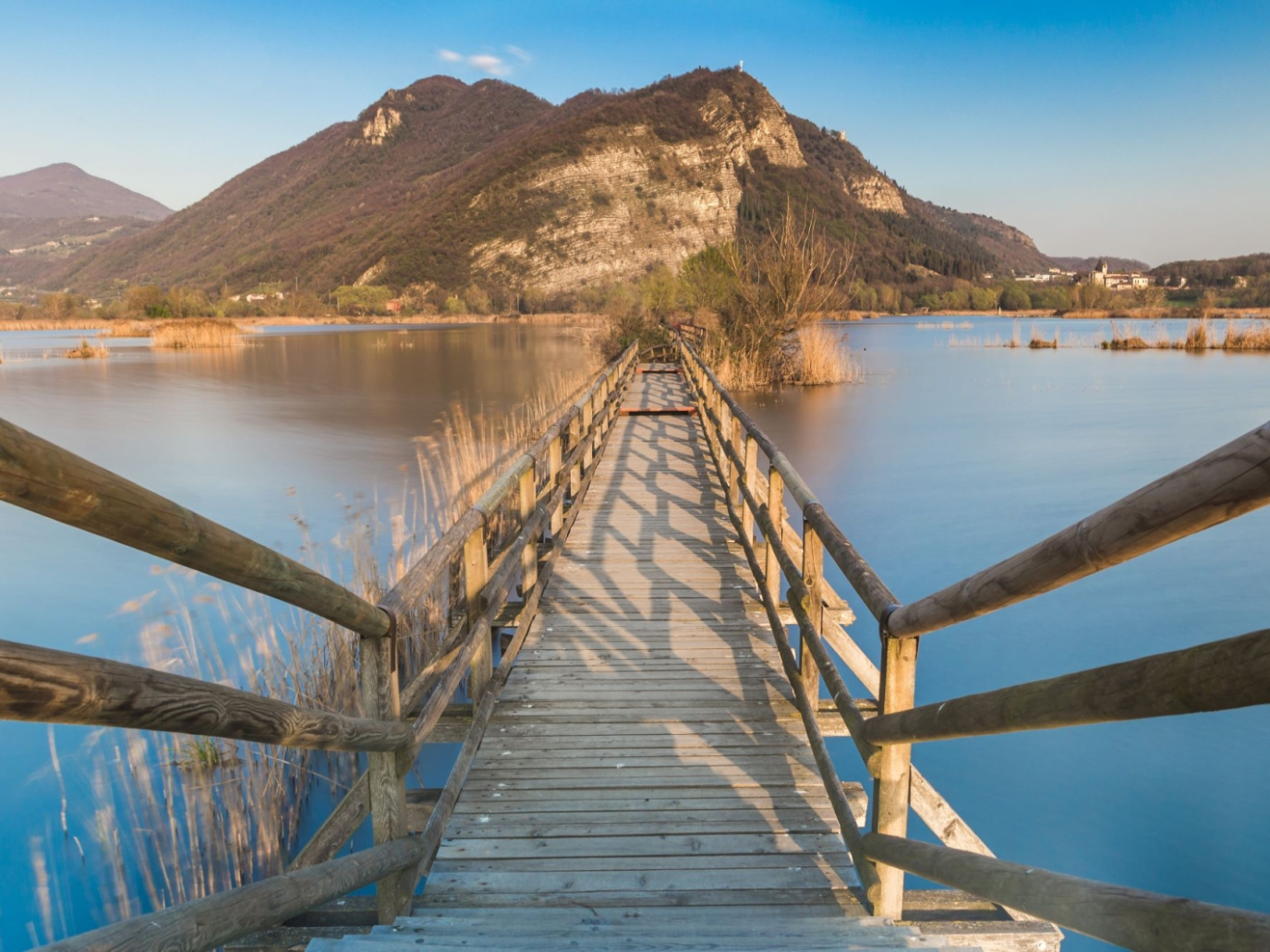On the 7th of October, an unusual scene played out on a marshland reserve in Northern Italy, on the banks of Lake Iseo in the foothills of the Alps. A team from Acque Bresciane – the utility that manages integrated water services for the province of Brescia – left their office outfits behind and, shovels in hand, set out to plant a hundred trees and shrubs among the ponds and peat bogs.
The corporate outdoor weekend was not simply a team-building exercise (although this was undoubtedly a welcome benefit): it was the first step in an ambitious restoration project on one of the region’s most important wetlands, the Sebino Peat Bogs.
The goal is to plant and take care of 1,550 trees and shrubs over the next three years, to protect local biodiversity and restore a nature reserve that is crucially important both as a water reservoir and carbon sink.
The Acque Bresciane woodland
In recent years, Acque Bresciane, as a Benefit Corporation, has been investing considerable resources in sustainability and regeneration projects. Therefore, it jumped at the opportunity presented by BioClima (a call to tender for Biodiversity and Climate), which was promoted by Regione Lombardia and supported by the Cariplo Foundation, to co-finance 50% of restoration and remediation activities in the Sebino Peat Bogs Nature Reserve, the project’s lead partner.
The project was designed according to the principles of forest planning thanks to the help of Etifor, an environmental consultancy and spin-off from the University of Padova, and developed within the wownature.eu platform, which specialises in reforestation and woodland restoration.
Thus, the planting of the first trees in October is only the beginning of a three-year journey that involves not only reforestation but also careful interventions to replace non-native species (which can be harmful to the ecosystem) with native ones, in addition to a comprehensive programme of wetland remediation for habitats that were once used to extract peat.
“We are setting ourselves the goal of restoring parts of the peat bogs to establish best practices at a regional and national level, increasing the number of native plants and species in areas that are currently invaded by non-natives with low biodiversity value,” explains Francesco Esposto, Head of Sustainability and Innovation at Acque Bresciane. “This means redesigning an environment that is more favourable to typical wetland fauna: amphibians, reptiles, birds, and aquatic species of particular interest. The goal will then be to calculate and report on the positive impacts of the new forest.”
Mauro Olivieri, Technical Director at Acque Bresciane, adds that “today, it is not enough to limit an organisation’s impacts; we have to promote positive effects on ecosystems and biodiversity, with what is known as a nature-positive approach.”
The Sebino Peat Bogs
The Sebino Peat Bogs Nature Reserve, established in 1984, is one of the last remaining examples of marshland in the plains around Brescia and it is highly interesting from a natural, environmental, and landscape perspective. Its reedbeds, lakes, ponds, and peat bogs extend for over 362 hectares and are home to 8 different types of habitats. According to the most recent surveys, 937 species of flora and fauna inhabit the area (amphibians, birds, freshwater fish, invertebrates, mammals, reptiles), including several rare and especially notable ones from a conservation perspective, listed in the Italian and European Red Lists.
In particular, the area is important as a nesting habitat for several aquatic and migratory bird species. However, there are also approximately 20 species included in the regional Black List due to their non-native or invasive status: these are the ones that the remediation project co-funded by Acque Bresciane will aim to replace or contain.
Over the next three years, rare woodland habitats such as mixed riparian forests and floodplain forests will be restored. Reforestation efforts will also serve to create a filter for atmospheric pollutants and the acoustic disturbance caused by roads in the area. Finally, in addition to the protection of biodiversity, whose effects will hopefully be visible even in the short term, the interventions will provide a long-term contribution to improving the marshland ecosystem’s CO2 storage and water regulation capacity.
This article is also available in Italian / Questo articolo è disponibile anche in italiano
Image: Acque Bresciane
© all rights reserved



